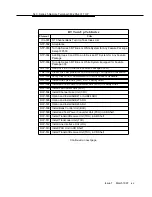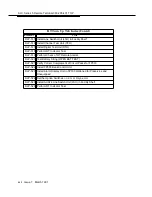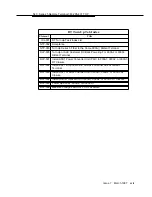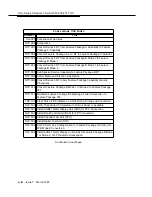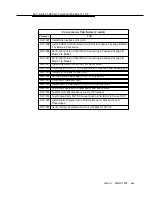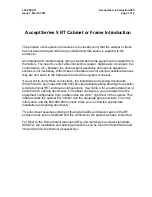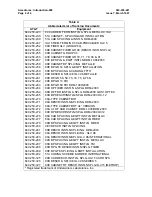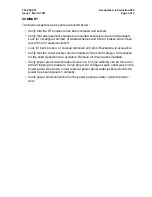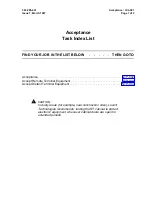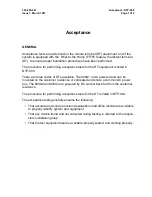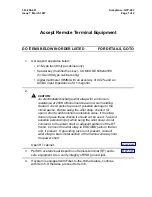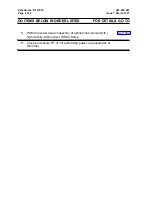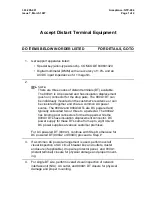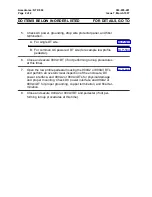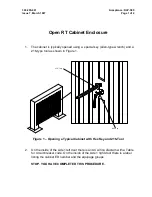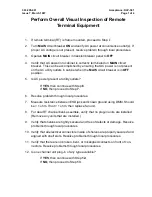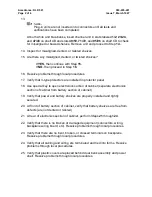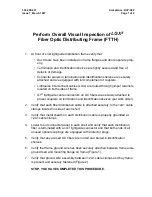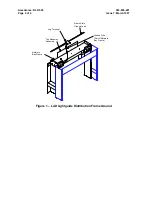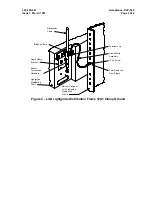
363-205-401
Acceptance: Introduction-000
Issue 7, March 1997
Page 1 of 4
Accept Series 5 RT Cabinet or Frame Introduction
The purpose of acceptance procedures is to visually verify that the cabinet or frame
has not been damaged while being installed and that power is supplied to the
enclosure.
All intershelf and interframe/bay wiring is tested before the equipment is shipped from
the factory. The need to verify cable connections (power, digital pairs, drop pairs, fan
control leads, etc.) between the channel bank assembly and various apparatus
shelves is not necessary. Often these connections are not easily accessible because
they are tied down to the frame work behind the equipment shelves.
If you want to verify these connections, the installation and splicing documents
(640-250-XXX, see index 640-000-000) provide detailed cabling drawings for specific
remote terminal (RT) enclosure configurations. See Table A for an abbreviated list of
640-250-XXX splicing documents. For cabinet enclosures, you can determine the
equipment configuration from a label inside the side 1 right door of the cabinet. This
label provides the cabinet ED number and the equipage group numbers. From this
information and the 640-000-000 numeric index you can find the appropriate
installation and splicing documents.
This document assumes splicing of the digital facility and derived pairs in the RT
enclosure has been completed and the commercial AC power has been connected.
For Fiber to the Home distant terminals (DTs) and multi-services distant terminals
(MSDTs), the installation and splicing procedures can be found in 363-205-002 and
363-205-004 User's Manual (respectively).










